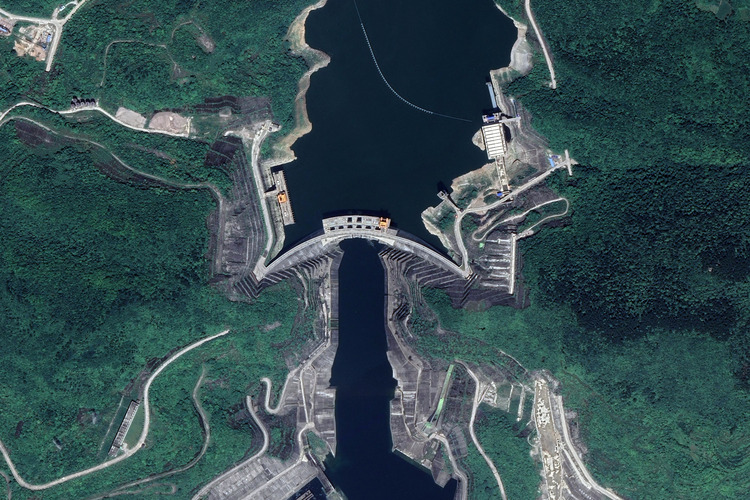
Hydropower dam in China likely to lead to downstream environmental repercussions in several major countries
By
Dams retain water, control flooding, and generate electricity. In the case of China’s latest planned hydropower dam – set to be the largest in the world – these vast structures can also have a far more unexpected quality: sparking great geopolitical tensions.
That’s because the newly proposed $137 billion USD dam is planned to be constructed along a transboundary river (a river shared by two or more countries) – the 496-kilometre-long Yarlung Tsangpo. While the dam will be built in Tibet, its waters eventually flow through India and Bangladesh, where it is known as the Brahmaputra. As lower riparian countries – nations located downstream of the river basin – India and Bangladesh will consequently face any impacts from the new build.
Enjoying this article? Check out our related reads:
China & its water control
More than 87,000 dams are in China and Tibet, and many of these infrastructure projects significantly alter water flow to neighbouring countries. Reduced water levels have knock-on effects for nations downstream, from Myanmar to Laos, Cambodia and Vietnam.
In 2020, Chinese dams in the upper Mekong collected more water than ever before, despite droughts in downstream areas. Such droughts led to the river dropping to its lowest-ever level and significantly decreased fish populations.
![Tibet the Yarlung Zangbo [Yalu Tsangpo] River,Niyang River,Yamzho Lake](https://geographical.co.uk/wp-content/uploads/yarlung-tsangpo.webp)
Similar concerns over water shortages exist for the Yarlung Tsangpo dam, which may block water into India and Bangladesh. Not only could the dam prevent this vital resource from flowing through, but it could additionally trap vast swathes of sediment upstream, with serious implications for farming.
For one of the world’s most densely populated regions, sediment blocking the Yarlung Tsangpo river may pose a significant threat to food security. Without this issue, Bangladesh already faces the highest head-count poverty ratio (44 per cent), followed by India (27 per cent) and Pakistan (22 per cent). And considering around 70 per cent of Bangladesh’s population lives in the Brahmaputra basin, any alterations to the river will likely have severe impacts on citizens’ livelihoods.
Sediment trapping in the Yarlung Tsangpo river may also accelerate coastal erosion in the Sundarbans – the world’s largest mangrove forest – located in India and Bangladesh. Rich in biodiversity, the forest also plays a pivotal economic role in both countries. Consequently,
Uniting China, India and Bangladesh
In respect to the Yarlung Tsangbo dam, there is currently no treaty or formal agreement binding China, India, and Bangladesh to work on it. In turn, that makes it extremely difficult for the nations to share and appropriately manage the water flowing through.
China has provided hydrological data to India since 2006 – and Bangladesh since 2008 – but some experts argue such agreements are insufficient in preventing water conflicts. As Special Advisor for South Asia at the Parley Policy Initiative Neeraj Singh Manhas explains, a ‘trilateral water-sharing agreement’ may help to ensure any potential conflicts are avoided.
It may sound like a tall order for all three countries to unite together, but it’s possible. Take the example of the Danube river, which currently is protected by a convention upheld by 14 nations alongside the European Union. Looking to the future, this may be the most appropriate way of creating a water-sharing system that benefits all.




